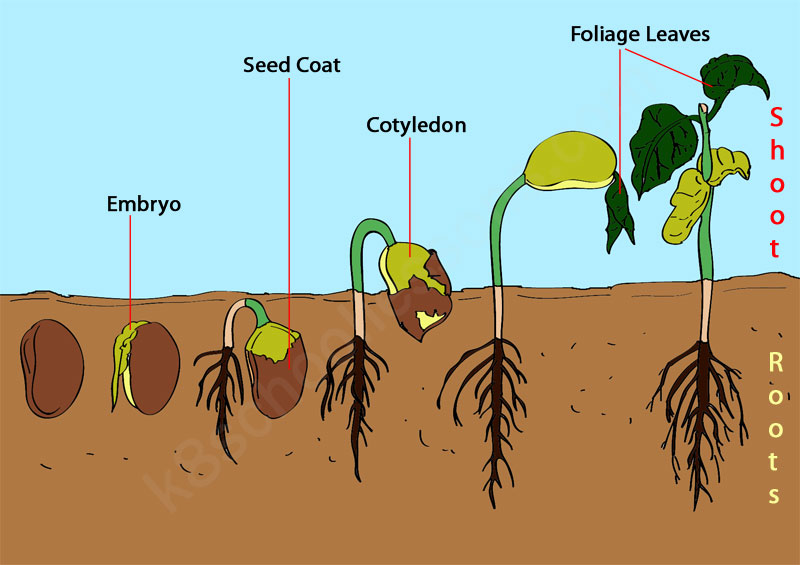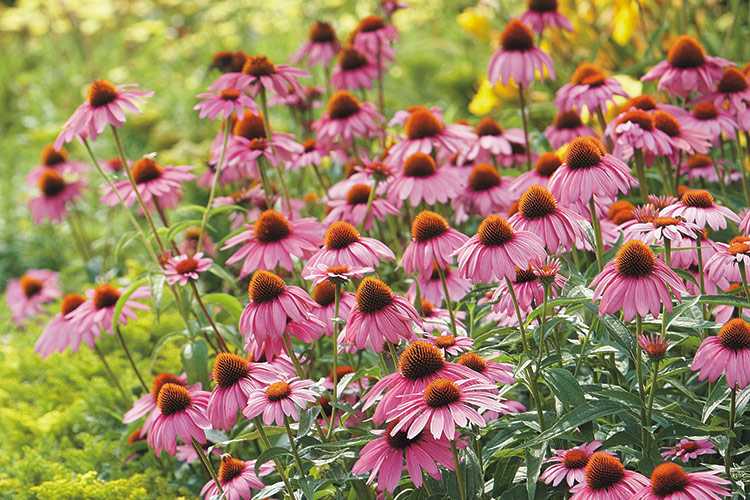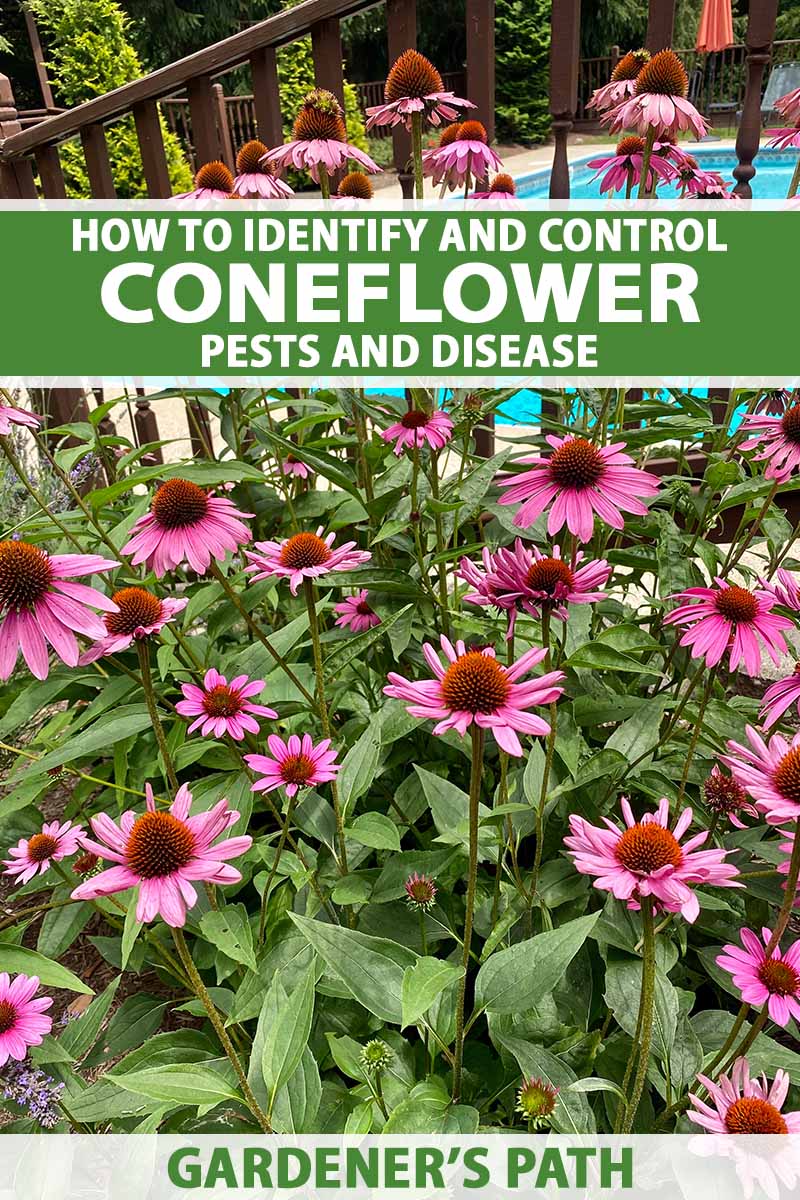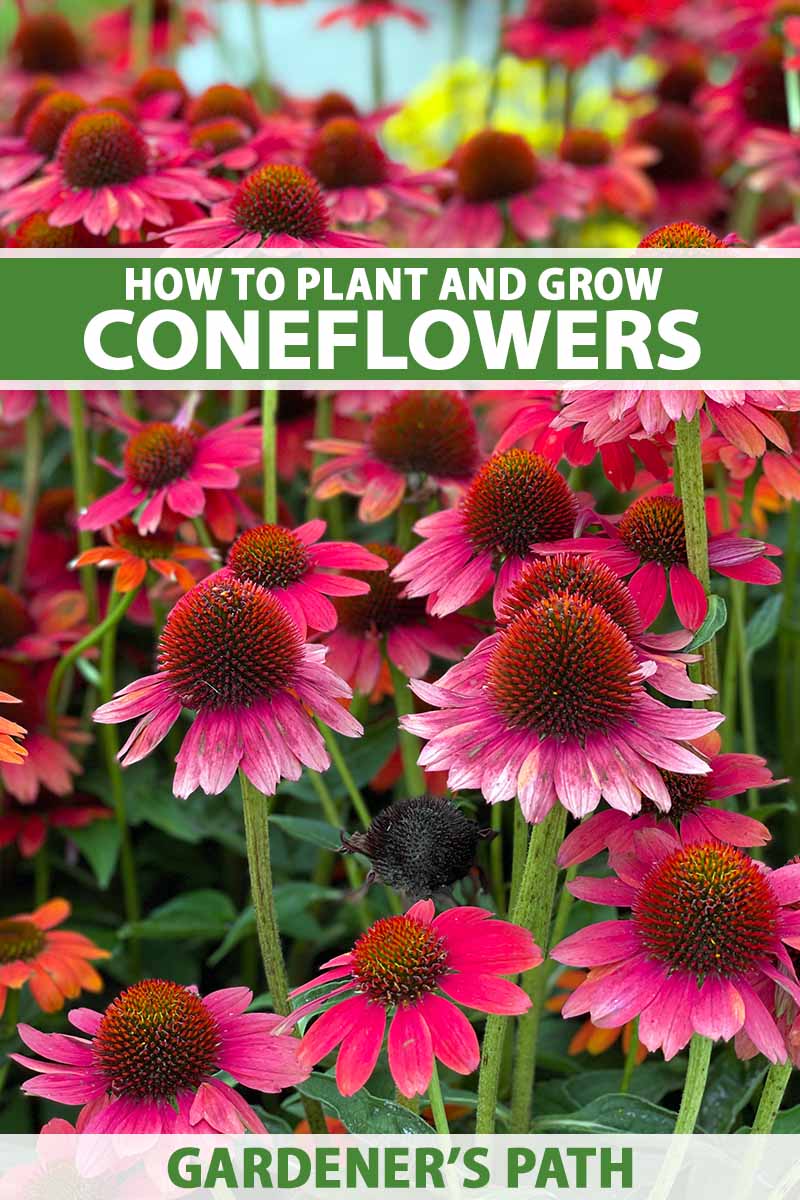Recognizing the First Signs of Germination
Coneflowers, also known as Echinacea, are a popular perennial flower known for their stunning blooms and low-maintenance requirements. When growing coneflowers from seed, it’s essential to recognize the first signs of germination to ensure optimal growth and development. So, what do coneflowers look like when they first sprout?
The initial stages of coneflower growth typically begin with the emergence of the first seedling leaves, also known as cotyledons. These leaves are usually small, rounded, and pale green in color. As the seedling grows, the cotyledons will begin to develop into the first set of true leaves, which are typically larger and more elongated.
During this stage, the root system of the coneflower seedling is also developing. The roots will begin to grow downward, anchoring the plant in the soil and absorbing essential nutrients and water. It’s crucial to maintain consistent moisture levels during this stage to prevent the soil from drying out and to promote healthy root growth.
To identify the first signs of germination, look for small, white or pale green shoots emerging from the soil. These shoots may be accompanied by a small amount of leaf growth, which will gradually increase as the seedling develops. Keep in mind that coneflower seeds can take anywhere from 7-14 days to germinate, depending on factors such as soil temperature, moisture, and light.
Once the seedling has emerged, it’s essential to provide optimal growing conditions to promote healthy growth and development. This includes maintaining a consistent temperature between 65-75°F (18-24°C), providing adequate light, and watering carefully to prevent overwatering.
By recognizing the first signs of germination and providing optimal growing conditions, you can set your coneflower seedlings up for success and enjoy a bountiful bloom in the months to come.
How to Identify Coneflower Seedlings
Once coneflowers have germinated, it’s essential to identify the seedlings correctly to ensure proper care and maintenance. So, what do coneflower seedlings look like? Coneflower seedlings typically have a few distinct characteristics that can help you identify them.
In terms of size, coneflower seedlings are usually around 1-2 inches (2.5-5 cm) tall and have a slender stem. The leaves are typically a pale green color and are shaped like a lance or a narrow oval. The leaves may be slightly fuzzy or hairy, especially on the underside.
The texture of coneflower seedlings is also worth noting. The leaves and stems are typically smooth to the touch, but may have a slightly rough or fuzzy texture. The seedlings may also have a slight sheen to them, especially in bright light.
To distinguish coneflower seedlings from other plants and weeds, look for the following characteristics:
- A single stem with a few leaves, rather than a cluster of stems
- Leaves that are a pale green color and shaped like a lance or narrow oval
- A smooth or slightly fuzzy texture on the leaves and stems
- A slender stem that is typically around 1-2 inches (2.5-5 cm) tall
It’s also worth noting that coneflower seedlings can be mistaken for other plants, such as weeds or grasses. However, by paying attention to the characteristics mentioned above, you should be able to identify your coneflower seedlings with confidence.
Now that you know what to look for, you can provide your coneflower seedlings with the proper care and maintenance they need to thrive. In the next section, we’ll discuss the importance of light and temperature in the early growth stages of coneflowers.
The Role of Light and Temperature in Early Growth
Light and temperature play a crucial role in the early growth stages of coneflowers. These environmental factors can significantly impact seed germination, seedling development, and overall plant health. Understanding the optimal light and temperature conditions for coneflowers can help you provide the best possible start for your plants.
Light is essential for coneflower growth, and the amount of light your seedlings receive can affect their development. Coneflowers typically require bright, indirect light to photosynthesize and grow. Direct sunlight can be too intense for young seedlings, so it’s best to provide filtered or dappled light. East- or west-facing windows are ideal for coneflower seedlings, as they receive gentle, indirect light.
Temperature also plays a critical role in coneflower growth. Coneflowers prefer daytime temperatures between 65-75°F (18-24°C) and nighttime temperatures around 55-65°F (13-18°C). Avoid placing your seedlings near heating or cooling vents, fireplaces, or drafty windows, as this can cause temperature fluctuations that can stress the plants.
Different light conditions and temperatures can affect seed germination and seedling development. For example:
- Low light conditions can lead to weak and spindly seedlings
- High temperatures can cause seedlings to bolt or become leggy
- Low temperatures can slow down seed germination and seedling growth
To optimize light and temperature conditions for your coneflower seedlings, consider the following tips:
- Use grow lights to supplement natural light, especially during the winter months
- Keep your seedlings away from extreme temperatures and drafts
- Monitor your seedlings’ response to light and temperature conditions and adjust as needed
By providing optimal light and temperature conditions, you can help your coneflower seedlings develop strong roots, healthy leaves, and a robust stem. This will set them up for success as they grow and mature, eventually producing beautiful blooms that will attract pollinators and add color to your garden.
Common Mistakes to Avoid When Growing Coneflowers from Seed
When growing coneflowers from seed, it’s essential to avoid common mistakes that can hinder seedling growth and development. By being aware of these potential pitfalls, you can take steps to prevent them and ensure healthy, thriving coneflower seedlings.
One of the most common mistakes to avoid is overwatering. Coneflower seedlings are susceptible to root rot and other problems when the soil is too moist. Check the soil daily, and water only when the top inch of soil feels dry to the touch. Avoid getting water on the leaves or crown of the plant, as this can cause rot and other issues.
Underwatering is another common mistake to avoid. Coneflower seedlings need consistent moisture to grow and develop. Make sure to water your seedlings regularly, but avoid overwatering. A good rule of thumb is to water your seedlings when the top inch of soil feels dry to the touch.
Inadequate light is another common mistake to avoid. Coneflower seedlings need bright, indirect light to photosynthesize and grow. If your seedlings are not receiving enough light, they may become leggy or weak. Consider using grow lights to supplement natural light, especially during the winter months.
Other common mistakes to avoid when growing coneflowers from seed include:
- Using low-quality potting soil that lacks essential nutrients
- Failing to provide adequate air circulation, which can lead to fungal diseases
- Not hardening off seedlings before transplanting them outdoors
- Not monitoring seedlings for pests and diseases, which can quickly spread and cause damage
By avoiding these common mistakes, you can help your coneflower seedlings grow and develop into healthy, thriving plants. Remember to provide your seedlings with the right amount of water, light, and nutrients, and to monitor them regularly for signs of pests or diseases.
With proper care and attention, your coneflower seedlings will be well on their way to producing beautiful blooms that will attract pollinators and add color to your garden.
Nourishing Your Coneflower Seedlings
Once your coneflower seedlings have germinated and are growing, it’s essential to provide them with the right nutrients to promote healthy growth and development. Fertilizing and watering your coneflower seedlings correctly can make a significant difference in their overall health and vigor.
When it comes to fertilizing your coneflower seedlings, it’s best to use a balanced, water-soluble fertilizer that is specifically formulated for seedlings. A fertilizer with a ratio of 20-20-20 (nitrogen-phosphorus-potassium) is a good starting point. Dilute the fertilizer to half the recommended strength to avoid burning your seedlings’ roots.
Water your coneflower seedlings when the top inch of soil feels dry to the touch. Avoid getting water on the leaves or crown of the plant, as this can cause rot and other issues. Instead, water at the soil level, making sure the pot drains well to prevent waterlogged soil.
Soil quality and pH balance are also crucial for healthy coneflower growth. Coneflowers prefer well-draining soil with a slightly acidic to neutral pH (around 6.0-7.0). If your soil is heavy clay or sandy, consider adding organic matter like compost or well-rotted manure to improve its structure and fertility.
Some other tips to keep in mind when nourishing your coneflower seedlings include:
- Avoid overfertilizing, as this can cause more harm than good
- Use a fertilizer that is specifically formulated for seedlings, as they have different nutritional needs than mature plants
- Monitor your seedlings’ response to fertilization and adjust as needed
- Keep the soil consistently moist, but not waterlogged, to promote healthy root growth
By providing your coneflower seedlings with the right nutrients and care, you can help them grow and develop into strong, healthy plants that will bloom beautifully in the months to come.
Pest and Disease Management for Young Coneflowers
As your coneflower seedlings grow and develop, they may be susceptible to pests and diseases that can harm their health and vigor. It’s essential to monitor your seedlings regularly and take action quickly if you notice any signs of pests or diseases.
Some common pests that can affect young coneflowers include:
- Aphids: small, soft-bodied insects that feed on plant sap
- Whiteflies: tiny, winged insects that feed on plant sap
- Spider mites: tiny, spider-like insects that feed on plant sap
These pests can be controlled using organic and integrated pest management methods, such as:
- Inspecting your seedlings regularly for signs of pests
- Using neem oil or insecticidal soap to control pest populations
- Introducing beneficial insects, such as ladybugs or lacewings, to control pest populations
Some common diseases that can affect young coneflowers include:
- Powdery mildew: a fungal disease that causes a white, powdery coating on leaves
- Root rot: a fungal disease that causes roots to rot and decay
- Leaf spot: a fungal disease that causes small, circular spots on leaves
These diseases can be controlled using organic and integrated disease management methods, such as:
- Providing good air circulation and watering practices to prevent moisture from accumulating on leaves
- Using fungicides, such as copper or sulfur, to control disease populations
- Removing infected leaves or stems to prevent the spread of disease
By monitoring your coneflower seedlings regularly and taking action quickly if you notice any signs of pests or diseases, you can help prevent these issues from becoming major problems and ensure healthy, vigorous growth.
Transplanting Coneflower Seedlings Outdoors
Once your coneflower seedlings have grown to a height of 6-8 inches (15-20 cm) and have 2-3 sets of leaves, it’s time to transplant them outdoors. This process can be a bit tricky, but with the right steps, you can ensure a successful transition for your seedlings.
Before transplanting, make sure to harden off your seedlings by gradually exposing them to outdoor conditions over the course of 7-10 days. This will help them adjust to the change in temperature, light, and humidity.
Choose a location with full sun to partial shade and well-draining soil. Coneflowers prefer a slightly acidic to neutral soil pH (around 6.0-7.0). If your soil is heavy clay or sandy, consider adding organic matter like compost or well-rotted manure to improve its structure and fertility.
Space your coneflower seedlings 12-18 inches (30-45 cm) apart, depending on the variety. Plant them at the same depth as they were in their pots, and water well to settle the soil.
To minimize transplant shock, make sure to:
- Handle the seedlings gently to avoid damaging their roots
- Water the seedlings well before and after transplanting
- Provide shade for the first few days after transplanting to prevent scorching
After transplanting, keep the soil consistently moist, but not waterlogged. Coneflowers are drought-tolerant, but they will perform best with regular watering.
By following these steps, you can ensure a successful transplant and enjoy the beautiful blooms of your coneflowers in the months to come.
Monitoring Progress and Enjoying the Bloom
As your coneflowers grow and mature, it’s essential to monitor their progress and enjoy the beautiful blooms they produce. With proper care and attention, coneflowers can provide a stunning display of color and texture in your garden.
To promote healthy growth and encourage repeat blooming, consider the following tips:
- Deadhead flowers regularly to encourage the plant to produce more blooms
- Prune plants back to about 6 inches (15 cm) from the ground after blooming to promote new growth and prevent the plant from becoming leggy
- Divide and replant coneflowers every 3-4 years to maintain their vigor and promote healthy growth
By following these tips, you can enjoy the beautiful blooms of your coneflowers for years to come. Remember to also keep an eye out for any signs of pests or diseases, and take action quickly if you notice any issues.
As you enjoy the blooms of your coneflowers, take a moment to appreciate the beauty and wonder of these amazing plants. With their stunning flowers and attractive foliage, coneflowers are a great addition to any garden.
Whether you’re a seasoned gardener or just starting out, coneflowers are a great choice for anyone looking to add some beauty and interest to their garden. With their easy-to-grow nature and stunning blooms, coneflowers are sure to be a hit with gardeners of all skill levels.








